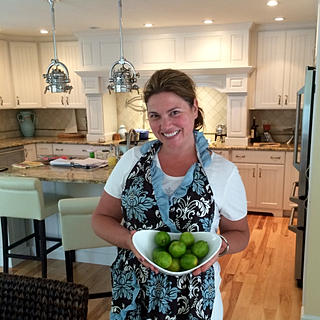Stockholm - Vasa Museum - Food History of the Vasa and its Crew.
- Tricia Cohen
- Dec 9, 2016
- 3 min read
Updated: Dec 18, 2022

I quickly stopped at the Vasa museum in Stockholm on my trip to Sweden. I was a "foodie" going to a boat museum... my initial thought… yawning. Big mistake. This museum and its contents are magnificent.
The Vasa was a Swedish warship built between 1626 and 1628. On August 10, 1628, thousands of onlookers crowded Stockholm harbor to watch this great ship sail. Symbolic of the King's ambition, the incredibly ornate ship was one of the most powerfully armed vessels in the world. There was one slight problem. The Vasa was dangerously unstable and top-heavy. After sailing a whooping 1,400 yards, the Vasa sank after a strong breeze grazed its sails. Yes, I said breeze. The ship, filled with men, cannons, and provisions, sank only 390 feet from shore at 105 feet. There the Vasa rested for 333 years.
In 1961, Sweden decided to conduct an arduous task; raise the ship. Archaeologists found thousands of artifacts and the remains of at least 15 people. Among the many items found were cutlery, food, and drink. With all these relics displayed, the museum does a fantastic job of providing a window into history, meticulously detailing the food habits on the ship.


Before the ship "sailed," the people of Stockholm prepared the Vasa for provisions. Peasants supplied raw materials to the crown instead of taxes. Cattle were sent to slaughter; grain and peas were transported in casks. The townsman was obligated to salt meat, bake bread, and brew ale for the fleet's needs. The navy prepared bread through its bakery. The Vasa captain, a merchant, supplied hops for the Navy yards beer. Once the boat was to leave coastal water, the crown's provisions were to be used. The historical food story gives the impression that the King and his people were incredibly proud of this ship, perhaps even enamored by what the power of this ship meant to the Swedish Naval fleet and the world.


The food was nutritious but dull, relying heavily on those dried peas and salted meats. Fresh food was critical to the crew's health, as they could be easily affected by scurvy and other diseases. There was a stated food ration per man per month that included: 63 liters of ale (burp), 1/2 barrel of bread, 8.5 kg of meat and fried fish, and 16.2 liters of dried peas. The gallery had an open fire to cook the food farthest down in the hold. Since the cook prepared food for the entire crew, there were large cooking vessels onboard. The most prominent cooking pot was a 215-liter iron cauldron.
On land, there was a social system on the boat, starting with the captain down to the lowest level crew member. The senior officers brought their tableware of pewter, glass, and fine imported pottery called Faience. The officers also brought forks, which were in vogue within Swedish nobility. The working crew shared drinking vessels, mess kits, and bowls. Evidence shows that some crew members brought wooden platters, knives, and spoons. The materials on the board had the owner's marks carved into the items.
On a walk through the museum, you can view all of these unique artifacts, not to mention the 226-foot, fully intact ship that the museum is built around. If you don't find yourself heading to Stockholm anytime soon, peruse the Vasa website http://www.vasamuseet.se/en.





